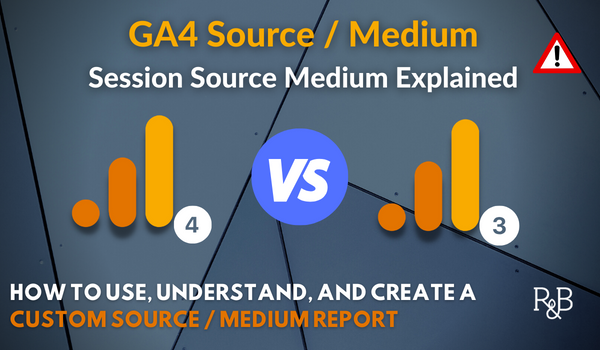Unveiling the Effect of Additional Measurement in Google Analytics on Information Analysis and Insights
In the world of information analytics, the usage of secondary measurements within Google Analytics has become a crucial tool for removing much deeper understandings and unraveling complex patterns that may otherwise stay covered. By peeling back the layers of key data sets, second dimensions offer a nuanced viewpoint that enriches the understanding of individual behavior, site efficiency, and the effectiveness of advertising strategies. The true effect and untapped potential of second dimensions are commonly underestimated, overshadowed by the attraction of primary metrics. As we navigate through the detailed landscape of data analysis, the value of second dimensions comes to be progressively noticeable, shedding light on vital information that hold the key to informed decision-making and calculated optimizations.
Exploring the Concept of Secondary Measurements
Second measurements in Google Analytics give added understandings by permitting users to examine main data in conjunction with an additional quality. This function enables a much more comprehensive understanding of the primary information by adding one more layer of details for evaluation. By including additional dimensions, customers can dive much deeper into the data and uncover valuable relationships that may otherwise go undetected. For instance, by matching the key data of website web traffic with secondary measurements like demographics or habits, marketing experts can get a more thorough sight of their audience and tailor their strategies appropriately.
Understanding the concept of additional measurements is vital for making best use of the potential of Google Analytics. It enables individuals to sector information effectively, determine patterns, and make educated choices based on an extra full photo of their analytics data. By checking out the different second measurements readily available in Google Analytics, users can unlock new insights and enhance their digital advertising initiatives. Fundamentally, secondary dimensions serve as a powerful tool for enhancing data analysis and driving actionable results.
Enhancing Data Interpretation With Additional Measurements
Having actually established the fundamental understanding of second measurements in Google Analytics and their critical role in information analysis, the emphasis now shifts in the direction of leveraging these additional credit to improve the analysis of analytics data (what is a secondary dimension in google analytics). By incorporating second dimensions right into data evaluation, analysts can obtain much deeper insights right into user actions, web site performance, and advertising and marketing efficiency

Furthermore, second dimensions help in contextualizing key data metrics by giving added layers of details. This contextualization aids in comprehending the 'why' behind the data fads, aiding analysts make informed choices and optimizations to enhance total efficiency. Ultimately, incorporating second measurements enhances the information analysis procedure, bring about even more critical activities and purposeful understandings.
Uncovering Hidden Insights Through Secondary Measurements
Checking out the depths of analytics data with additional dimensions discloses beneficial insights that would otherwise continue to be covered. By incorporating secondary dimensions in Google Analytics, services can discover concealed patterns, trends, and relationships that supply a more comprehensive understanding of customer habits and internet site performance. These additional layers of information permit experts to dig much deeper into the key measurements, such as traffic resources or landing web pages, and obtain a more nuanced point of view on just Going Here how different variables communicate with each various other.
Via the use of additional dimensions, analysts can section and contrast information throughout various dimensions, allowing them to identify particular aspects that affect individual involvement, conversion rates, and overall success metrics. By coupling the key measurement of 'tool group' with the second dimension of 'age team,' marketing experts can pinpoint which age demographics like accessing the internet site via mobile gadgets versus desktops. This level of granularity encourages organizations to make data-driven choices and enhance their approaches for much better results. Eventually, revealing hidden understandings via additional dimensions enhances the deepness and precision of data analysis, leading to more informed decision-making and enhanced performance results.
Leveraging Second Dimensions for Actionable Analytics
Structure upon the insights introduced with secondary measurements in Google Analytics, companies can currently harness this enriched data landscape to drive workable analytics and tactical decision-making. By leveraging second dimensions, organizations can dive deeper right into their data to draw out important patterns, fads, and relationships that may have formerly gone undetected. This deeper level of evaluation enables organizations to acquire an extra comprehensive understanding of individual actions, campaign performance, and total site effectiveness.
One trick benefit of using secondary measurements for actionable analytics is the capability to section information based upon particular standards. This division allows companies to customize their projects and strategies to different target market teams, bring about more targeted and efficient advertising and marketing initiatives - what is a secondary dimension in google analytics. In addition, secondary measurements provide an even more holistic view of customer communications, enabling companies to optimize their site material, style, and general individual experience
Optimizing Decision-Making With Second Measurements
To boost critical decision-making in analytics, leveraging second measurements in Google Analytics can give an extra nuanced viewpoint on individual habits and campaign performance. By integrating additional you can find out more dimensions into information evaluation, businesses can delve deeper right into the specifics of their web site visitors' interactions and engagement patterns. This extra layer of details enables a more thorough understanding of just how various variables, such as demographics, gadgets, or web Look At This traffic sources, influence vital efficiency signs.

Final Thought
Finally, the usage of secondary measurements in Google Analytics plays a crucial function in boosting data evaluation and uncovering concealed insights. By exploring this principle, one can acquire a deeper understanding of customer actions and make notified decisions based on workable analytics. Leveraging additional measurements enables a more comprehensive analysis of data and makes the most of the efficiency of decision-making processes.
